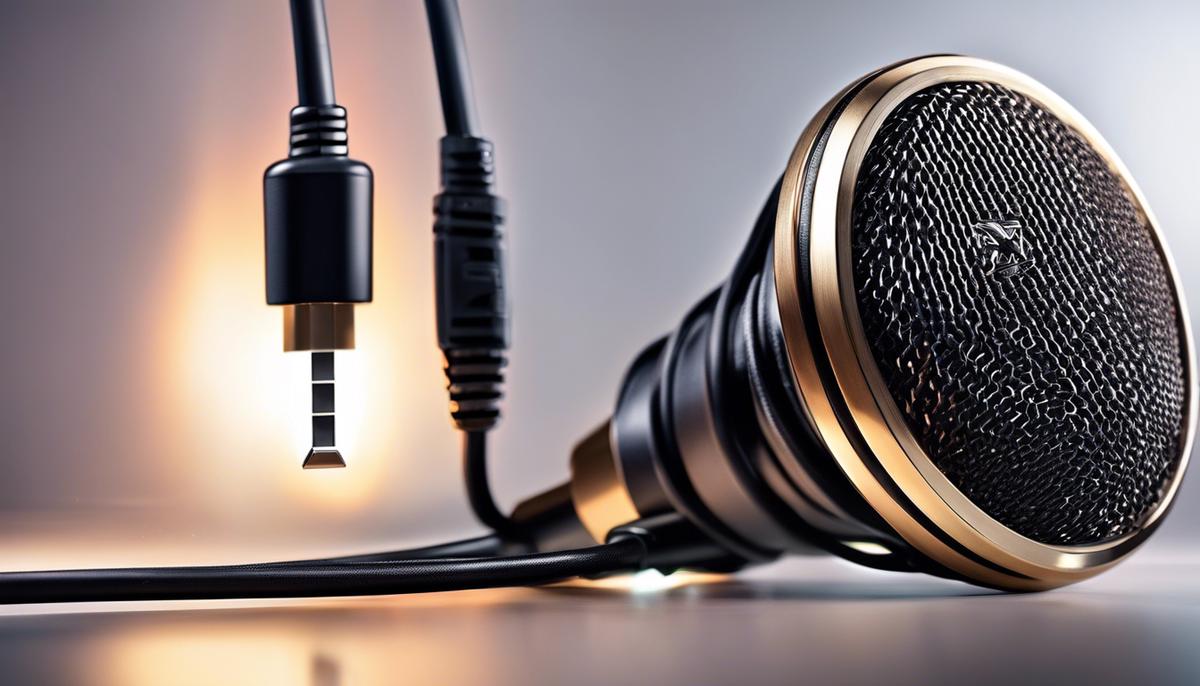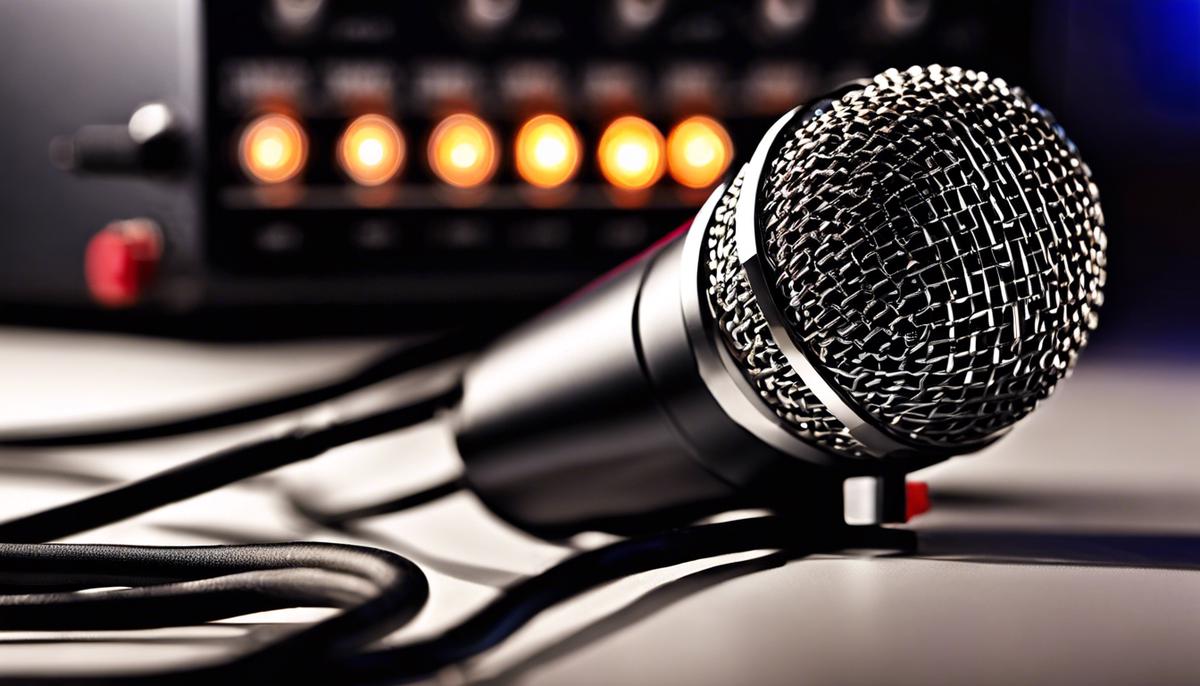The art of sound creation and manipulation is much more complex than simply plugging in a microphone and hitting record. At the heart of professional-quality audio lies a topic that isn’t often addressed but is vitally important – phantom power. This essay aims to enlighten enthusiasts and hobbyists about the fundamental concept of phantom power and its crucial role in microphones used in conversations, broadcasts, and recordings. Phantom power could very well be the unsung heroes of sound. It not only influences the clarity of the sound, but when problems arise, it could inhibit the microphone’s function entirely. Therefore, being adept at identifying power-related issues can significantly improve the output.
Understanding Phantom Power
Deep within the soul of music, a dynamo thrums and crackles- a force that empowers microphones to their full potential. Its very name oozes an intangible mystique: Phantom Power. Soundwaves transformed into emotions, feeding the collective inner rhythm of concert halls and small gigs alike. Fasten your seatbelts music aficionados, we’re diving into the fascinating world of phantom power and how it imparts voice to microphones.
Phantom Power – radiating an ingenious elegance just by its moniker alone, is fundamentally a reliable source of Direct Current (DC). Now, don’t let the ‘phantom’ deceive you. It’s a technical term, not a spiritual force summoned by a rocking guitarist or operatic singer. Rather, its realm is the realm of technology, unseen yet crucial, like a spine running through and lending strength to every song rendered on microphones.
Nonetheless, why is phantom power needed in the first place? The answer lies deep within the anatomy of the microphone itself – specifically, condenser microphones. Far more sensitive and capable than their dynamic counterparts, condenser microphones utilize an electrically-charged diaphragm to convert sound into an electrical signal. The diaphragm vibrates when struck by sound waves, changing the distance between itself and a back plate, producing an electrical signal. However, this system requires electric power to operate – power supplied by, you guessed it, Phantom Power.
Once engaged, phantom power works its magic through the microphone cable. A mic cable has two inner wires for audio signals (positive and negative), and a wire for ground. Phantom power sends the electric current equally through the two audio-signal wires in the microphone cable, making it “balanced”. This eliminates noise and offers more clarity for long-distance cables.
Phantom Power usually comes with preamps or audio interfaces, and can vary from 12V to 48V. The charming term ‘phantom’ references the hidden power conveyed through the balanced cables. And yes, much like a phantom, it is invisible yet influential, fragile yet robust.
In terms of operation, to harness the thrilling versatility of this mysterious power, one needs to turn it on – but with caution. It’s crucial to disconnect the microphone before activating the phantom power as turning it on while the mic is hot could potentially damage the equipment. After turning it on, wait for a couple of moments and then reconnect the microphone. Every burble, whisper, and vibration – ready to subtly surge into life.
Phantom Power may be invisible. It may seem elusive akin to a spectral presence in the world of music technology. But just as poignant lyrics touch our hearts and powerful compositions shape our world, Phantom power touches the pulsing essence of the microphone, empowering it and shaping it into an instrument of pure expression. Indeed, even the unseen has the audacity to create sonic wonders in the hands of ardent music lovers.
Unleash the symphony within the silence. Give voice to the voiceless. Sit in the invisible cockpit of technology and control the heartbeats of melody with the mysterious, intriguing power of the phantom. Unseen, yet undeniably present – Phantom Power.

Identifying Phantom Power Problems
Turning a Keen Ear to Phantom Power Problems: A Melody Maker Guide
Nestled deep within this music marvel—the microphone—is an unseen conductor: phantom power. As we’ve learned, it’s the unseen maestro conducting the symphony of sound that is indispensable in our musical journey. Now, every maestro, while remaining enigmatic, can from time to time tune out. So let’s delve into the world of diagnosing issues related to phantom power.
Our auditory adventures tap into multiple layers, one being the connection between phantom power and your microphone. When you discover your condenser microphone striking a discordant note, your first suspect is indeed, phantom power.
Phantom power issues mainly manifest in two ways: no sound or intermittent sound. When under the symphony of such silence, your first step is to run a sound check, ensuring that all your cables are properly connected and your microphone’s power switch is turned on.
Next, single out phantom power as the root cause – process of elimination, my friend. Try using your microphone with another audio interface or mixer that provides phantom power. If the microphone works, you may face issues with the phantom power on your audio device.
Nestling in the realm of intermittent sound may be a faulty cable. Cables should be XLR cables for phantom power to be efficiently “riding the waves”. Simply switching out your XLR cable might bring harmony back on track.
Voltage mismatch can also be a sour note. Ascertain your equipment’s voltage requirements. Though the common voltage falls within the 11-52 volts range, it might vary based on the devices in use. Consult your gear’s manual to ensure the phantom power supplied matches the equipment need. Or better yet, apply an in-line phantom power meter to instantly read voltage levels.
Do heed a word of caution: never plug in or unplug mics while the phantom power is turned on. This hastens issues related to its functionality – faulty switches, damaged diaphragms, the saga goes on. It’s like interrupting the conductor mid-performance – we wouldn’t want that, would we?
Moving onto the deeper realms – the internal electronics and components of your mixing console or audio interface. In such cases, the expertise of a professional sound technician may be required, alas, our amicable acquaintance.
Remember, even though the phantom power is concealed in its operation, it can transform your musical experience. Its significance cannot be understated, for it is a force that harmonizes your music-making journey. Viewing it through the looking glass of problem diagnosis heightens our appreciation of this integral component. Now, you’re well-equipped for a rhythmic smooth sail- harmonious and free from the discord of phantom power problems, on a conjoined voyage of melody and technology.

TroubleShooting and Fixing Phantom Power
Diving in, the silent whisperer, Phantom Power, can sometimes falter in its duties. When it does, the immediate consequence is a disruption of your musical odyssey, a sudden silence from the microphone, or a crackling, intermittent burst of sound. As a true lover of music, this issue needs your immediate attention. Troubleshooting and resolving issues with Phantom Power issues might seem like a complex challenge – fear not, because the solution often lies in simplicity.
Voices, and the tools amplifying them, desire understanding and care in the face of problems. After all, they are steadfast in carrying our expressions across the waves of the aural realm. Begin the troubleshooting process by checking all cables and connections involved. It’s surprising how many phantom power issues can be traced back to the simplest of problems – a loose or faulty connection. Inspect each cable meticulously, ensuring they’re correctly connected, and look out for signs of wear or damage.
When cables are not to blame, take a magnifying glass to your microphone. Test it with a different audio interface or mixer. Camera flashes work on the same voltage as most condenser microphones, and they can be an effective testing means. The process can eliminate potential suspects and could indicate whether your audio interface, mixer, or the microphone itself is causing issues with the phantom power.
Your analysis should not be shallow; instead, dive deeper into the podcast’s essence by understanding your equipment’s voltage requirements. A phantom power meter becomes an invaluable tool here, allowing you to ascertain if your unit is delivering the right amount of power. Remember, most condenser microphones need a phantom power supply between 11-52 volts to function efficiently.
As you continue your quest to revive the invisible current, beware of the pitfalls. Never plug or unplug microphones while phantom power is on. Doing so could result in loud pops and clicks that can damage your speakers or your hearing. Be diligent in switching off the phantom power when making connections.
Sometimes, the answer lies not at our fingertips but needs a seasoned eye and skilled hand. If all the aforementioned steps fail, it’s time to call in the professionals. Internal electronics and components of the microphone that require attention are best left in their capable hands. Remember, the pursuit of silence’s riddle should not lead to a cacophony of disappointment.
Phantom Power, an ethereal entity, plays an indispensable role in music, its tones, textures, and experiences we hold dear. When it faces issues, it’s more than a technical hiccup; it’s a hiccup in our aural conversation. Hand in hand with understanding and troubleshooting know-how, we can ensure our musical expressions echo loud and clear, forever and always.

Overall, mastering the principle of phantom power and recognizing its common problems is a significant stepping-stone towards attaining complete clarity and potency in audio production. The reality is that having the knowledge and skills to troubleshoot phantom power issues can make a world of a difference. It could mean the narration in your podcast sounds clear and strong rather than weak and muffled; the vocalist in your recording studio performs flawlessly instead of dealing with unnecessary power-related interruptions. And who knows? With your newfound skills, you might just save the day during a live broadcast when the microphone hits a snag. Ultimately, this essay is not just about understanding theoretical concepts but embracing the practical, hands-on approach to problem-solving in real-world situations.

Comments.
Currently there are no comments related to this article. You have a special honor to be the first commenter. Thanks!